KRK V Series 8 Handleiding
Bekijk gratis de handleiding van KRK V Series 8 (6 pagina’s), behorend tot de categorie Monitor. Deze gids werd als nuttig beoordeeld door 56 mensen en kreeg gemiddeld 4.8 sterren uit 28.5 reviews. Heb je een vraag over KRK V Series 8 of wil je andere gebruikers van dit product iets vragen? Stel een vraag
Pagina 1/6

USER MANUAL
KRK V SERIES 4
BI-AMPLIFIED
DSP CONTROLLED
STUDIO MONITOR
“They deliver a clean and detailed sound with a strong sense of focus, they make good mixes sound
good, and if there are any problems with, they’ll let you know.” Sound on Sound Magazine
“It’s no exaggeraon to say that the V8s are among the best monitors we’ve tried in this price
range, and some of the nicest of this size at any price! ” DJ Magazine
“I love tracking on my 8s! I can turn them up for starng my drum sounds and they sound nice and
full and loud. Then I can turn them down, even dim them and still hear the fullness and clarity of
my recording.” Steve Marcantonio Legendary Nashville recording engineer/mixer

-dB LEVEL ATTENUATION starts set to
zero to be at +4 dBu or -10 dBV.
Reduce this on both monitors in half
dB steps to level match these to other
monitors you may use with them up to
-3 dB.
SYSTEM SETTINGS use these to adjust
overall system preferences.
A - GROUNDLIFT If you have a ground
loop and need to get rid of ground
related noise, use this switch. It may
also increase noise from other
sources.
B - INPUT - We ship the monitors -10
on the input sensivity. This makes
them compable with most gear;
choose +4 seng for most pro gear.
This will reduce your output level from
the -10 seng so you will need to
apply a higher-level signal at the input;
this will increase the dynamic range
and lower the noise oor.
C - STANDBY Use this to engage or
disengage the standby. If standby is
engaged the unit will go into sleep
mode 30 minutes aer no signal is
detected. The monitors will wake up
once you send signal to them again.
D - LOGO LED Turns the front KRK logo
on and o
E - LOGO LED DIM With the KRK logo on this sets it to dim or bright. Set it to your desired seng
according to the ambient light in your studio.
LOW CONTROL
LOW SHELF Cut (minus) seings are wall-coupling lters. These EQ setngs roll o the low end that
can build up the closer you get to walls or if you have low ceilings.
Boost (plus) sengs add low end if you need more thump, set these to your taste. Most studios
will achieve plenty of low-end with the seng in the at posion.
LOW MID PEQ This is a parametric EQ with a wide Q. It does not cut your low end as it cuts low mid
frequencies. We call it a desk lter. If you have a large mixing board aka “desk” or a large desk, you
can get a buildup in the low mids that can cause audio muddiness.
Note: one seng ulizes both the wall coupling lter and the desk lter.
HIGH CONTROL
HIGH SHELF and HIGH MID PEQ All these sengs are for you to set to your mixing taste. If you feel
you need more, or less high mids or highs, adjust these unl you are happy. Some studios are
bright and need less highs and some studios are dark and need more highs. We give you Shelf and
PEQ EQ’s. PEQ EQ adjusts high mid frequencies up or down without changing the high frequencies.
USB JACK is for possible future updates and/or features.

The KRK design team has painstakingly modeled and analyzed hundreds of monitor placement and
room acoustic situaons to ensure that KRK delivers the most useful eq tools with minimal
adjustments. Room acouscs are the biggest issue in today’s studios because we are not in the
perfectly built rooms now. Many great studios are just in revamped houses. We are giving you
control to correct some of the anomalies you get from these types of situaons.
With th e LOW CONTROL and HIGH CONTROL, we have given you 49 dierent combinaons eq of
voicings to help you correct for your studio acouscs to deliver more accurate monitoring. Start ’s
with LOW CONTROL HIGH CONTROL and switches set to L4 and H4 respecvely, which is at, no
cut or boost and the dB LEVEL ATTENUATION on 0. Set them up in your room per the informaon –
and diagrams below. Listen to some of your favorite songs and mixes. Try dierent posions in
your room and placement before making eq adjustments and then adjust the eq to give you your
best listening and monitoring experience.
SYSTEM SETUP Overall system setup is crucial to avoid unnecessary room acousc interacon. A
room’s natural acouscs may alter the sound level at various frequencies due to abnormal
dampening or reecons. Follow the checklist below for more details.
1 The system setup (studio monitors and work table) should be placed within the front 1/3 of the
room. Doing so will reduce reecon buildup of peak frequencies.
2 The le and right sides of the system setup should be centered an equal distance from the le
and right walls. This will produce even mid and low frequency response and preserve stereo
imaging.
3 Avoid a listening posion (your ears) that is closer than 3 feet (1 meter) from any wall. Also avoid
large objects (such as lamps or decoraons) near the studio monitor and listening posion.
4 Diusers and absorpon material in the corners and back of a room will help remove room
interacon by prevenng reflecons.
5 Carpeng will help prevent reecons from hard oor surfaces.
6 Studio monitor isolators (foam or rubber pads) will help remove low frequency coupling between
the stands and desk. Low frequency coupling will cause the stand or desk to vibrate causing
unwanted sounds.
7 A low noise oor (no outside interference from refrigerators or fans) is important to prevent the
masking of low frequency detail. Rales due to studio monitor playback should be removed as well.
Within the system setup, the studio monitors and listening placement should be posioned in a
near eld conguraon as follows: The le and right studio monitors should be approximately 3 to
5 feet (1 to 1.5 meters) apart and directed at a 60 degree angle towards the listening locaon.
Measure the distance between the le and right studio monitors and note the listening posion is
equal distance to both sides. This will form an equilateral triangle. It is important that both le and
right studio monitors are level matched. The V Series 4 is a two-way studio monitor with a tweeter
(producing high frequencies) and a woofer (producing mid and low frequencies) in one enclosure.
In between the tweeter and woofer is the acousc axis point where the full frequency range comes
together. The ideal locaon for the acoustic axis point is located at ear level in the listening
posion. It is acceptable to angle the studio monitors so the acousc axis is in the correct direcon.
Product specificaties
| Merk: | KRK |
| Categorie: | Monitor |
| Model: | V Series 8 |
Heb je hulp nodig?
Als je hulp nodig hebt met KRK V Series 8 stel dan hieronder een vraag en andere gebruikers zullen je antwoorden
Handleiding Monitor KRK
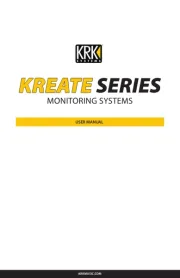
26 Augustus 2025
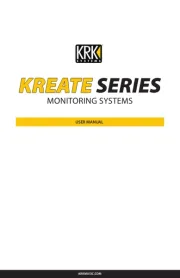
26 Augustus 2025
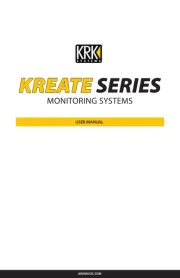
25 Augustus 2025

20 Juli 2024

10 April 2024

5 April 2024

5 April 2024

5 April 2024

8 Juli 2023

7 Juli 2023
Handleiding Monitor
- Marshall Electronics
- Peerless
- Citizen
- HoverCam
- BookIT
- QIXZOCV
- Alogic
- Mackie
- Minifire
- Hercules
- Jupiter
- CSL
- Dahua Technology
- Elvid
- Orima
Nieuwste handleidingen voor Monitor

14 September 2025

14 September 2025
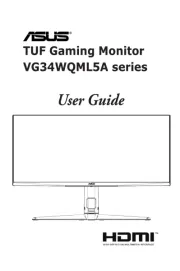
12 September 2025

11 September 2025
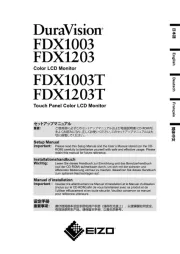
9 September 2025

9 September 2025
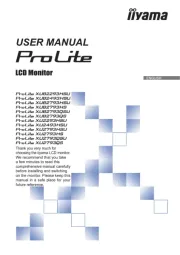
9 September 2025

8 September 2025
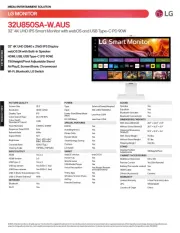
8 September 2025
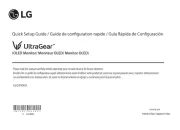
8 September 2025